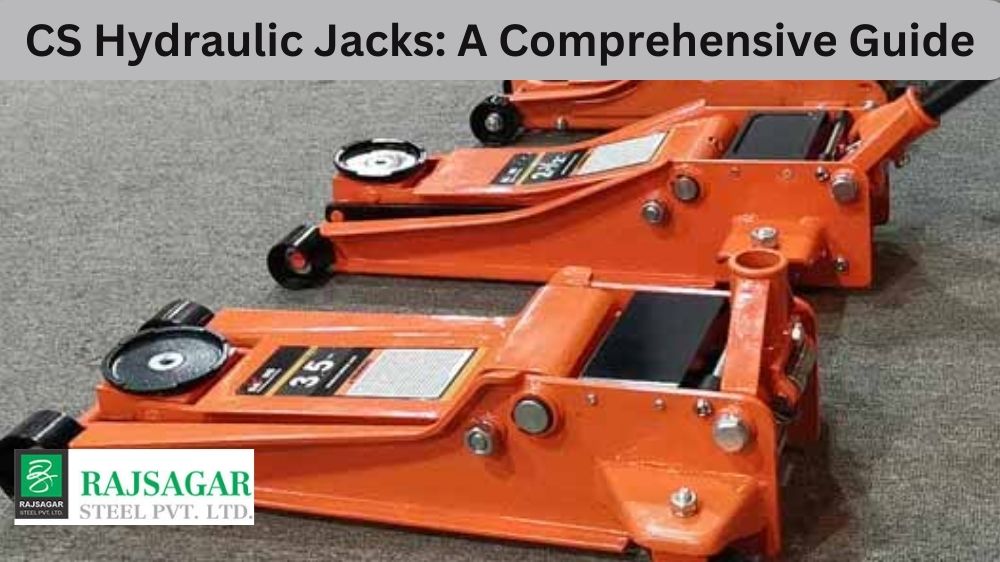Hydraulic jacks have become indispensable in industries where heavy lifting is the norm. From elevating cars for repairs to hoisting large construction materials, the functionality of hydraulic jacks makes arduous tasks manageable. This comprehensive guide delves into the specifics of CS Hydraulic Jacks, revealing their benefits, applications, and essential maintenance tips.
Introduction
Hydraulic jacks stand out as the backbone of various operations in heavy lifting, efficiency, and safety. Their ability to amplify a small force into a much larger one makes them a valuable tool across different sectors. Let’s explore what makes CS Hydraulic Jacks a crucial asset in lifting mechanics.
What are CS Hydraulic Jacks?
Definition and Functionality
CS Hydraulic Jacks are mechanical devices using hydraulic power to lift heavy loads easily. Leveraging Pascal’s law, they convert a small force exerted on a piston into a large force capable of lifting significant weights.
Different Types of CS Hydraulic Jacks
There are several types of CS Hydraulic Jacks, each designed for specific tasks:
- Bottle jacks: Shaped like a bottle, these jacks are compact and ideal for lifting vehicles or machinery.
- Floor jacks: With a low profile, these are commonly used in automotive repair shops.
- Trolley jacks: Featuring wheels and a handle, trolley jacks can be easily moved to the desired location.
Benefits of CS Hydraulic Jacks
Increased Lifting Capacity
CS Hydraulic Jacks can lift tremendous loads that manual labour simply cannot. Their lifting capacity can reach several tons, making them a powerhouse tool.
Versatility and Ease of Use
Whether you’re working on a car or setting up heavy machinery, CS Hydraulic Jacks can adjust to fit multiple scenarios. Their straightforward operation requires minimal training and enables them to be used by various industries.
Durability and Long Lifespan
Constructed from high-quality materials, CS Hydraulic Jacks are built to last. Their robust nature ensures they can withstand challenging environments and frequent use.
Applications of CS Hydraulic Jacks
Automotive Industry
In the automotive field, CS Hydraulic Jacks are fundamental for performing repairs and maintenance. They securely raise vehicles, allowing mechanics to access the underside with confidence.
Construction and Heavy Machinery
From lifting building materials to positioning structural components, CS Hydraulic Jacks play a pivotal role in modern construction techniques.
Industrial Maintenance and Repairs
Hydraulic jacks offer a stable and reliable lifting mechanism for maintaining industrial equipment or conducting substantial repairs.
Factors to Consider when Choosing CS Hydraulic Jacks
Weight Capacity and Lifting Range
Before selecting a jack, it’s crucial to evaluate the maximum weight it will need to lift and the height range required for operation.
Quality and Reliability
Investing in a CS Hydraulic Jack known for quality craftsmanship and reliability will ensure safety and efficiency in the long run.
Safety Features and Certifications
Select jacks with safety features like overload protection that meet industry certifications.
Maintenance and Safety Tips for CS Hydraulic Jacks
Regular Inspections and Lubrication
Routine inspections for potential issues and proper lubrication will keep your CS Hydraulic Jack functioning smoothly.
Proper Usage Guidelines and Precautions
Always follow manufacturer guidelines and safety precautions to ensure optimal operation and reduce the risk of accidents.
Storing and Handling Practices
Proper storage and handling will prolong the life of your hydraulic jack, keeping it ready for action when you need it most.
Conclusion
More than just a tool, CS Hydraulic Jacks are essential in several heavy-lifting industries. They are a wise investment for automotive, construction, and industrial companies due to their dependability and range of uses. CS Hydraulic jack will remain a force multiplier, guaranteeing smooth operations and worker safety with the correct upkeep and care. Whether elevating a new building or hoisting engines, these powerhouses of lifting reaffirm that no weight is too great to bear when equipped with the right tool.

